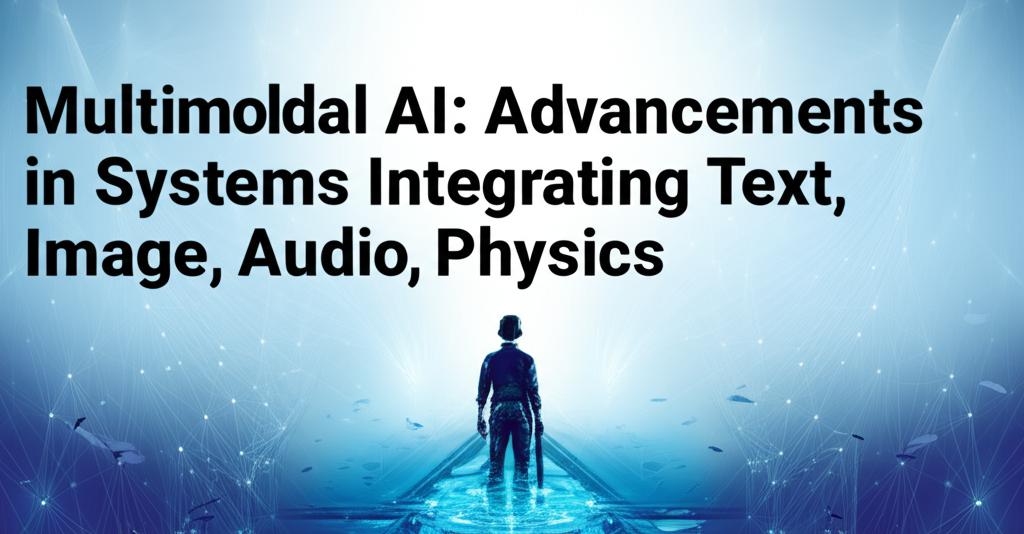Multimodal AI is rapidly transforming how machines understand and interact with the world, going beyond single data types like text or images to process and integrate a rich variety of inputs. This approach, which combines text, images, audio, and even video, allows AI to develop a more holistic and nuanced understanding, much like humans do. The fusion of these different data streams, or modalities, is key to creating more contextually aware, accurate, and intelligent AI systems.
Core Concepts and ArchitectureAt its heart, a multimodal AI system typically involves three main stages: input, fusion, and output.
- Input: Specialized neural networks process each type of data (text, image, audio, etc.) individually.
- Fusion: This is a critical step where the processed information from different modalities is combined and aligned. Various strategies like early, mid, or late fusion are employed to create a shared representation of the data. This allows the model to learn from and understand the relationships between multiple sources simultaneously.
- Output: Based on the integrated information and the specific task, the system generates a result. This could be a classification, content generation (like a recipe from a food photo), or a reasoned decision.
A significant and cutting-edge development in multimodal AI is the integration of physics principles. This aims to create AI models that not only learn from data but also adhere to the fundamental laws governing the physical world. This is particularly transformative in scientific research and industrial applications.
- Physics-Informed Neural Networks (PINNs): These are a powerful method where AI models, specifically neural networks, are designed to approximate solutions to partial differential equations (PDEs) that describe physical processes. This helps the AI better respect the underlying dynamics of the system it's modeling.
- Physical Knowledge as Input: Instead of embedding physical laws directly into the model's architecture, this approach feeds the AI with explicit physical knowledge or priors. This could include conservation laws (mass, energy), fluid dynamics equations, or boundary conditions like initial atmospheric states.
- Treating Observational Data as Multimodal: In fields like weather and climate science, observational data from different perspectives (temperature, pressure, wind speed) can be treated as multimodal inputs. Transformers are then used to integrate this diverse physical data, often transformed into 2D images or 3D videos, enhancing prediction accuracy and interpretability.
- AI Agents for Scientific Discovery: Multi-agent AI systems are emerging where different AI agents specialize in tasks like knowledge retrieval, multimodal data integration, and physics-based simulations. These agents, often powered by Large Language Models (LLMs) and Vision Language Models (VLMs), can autonomously run simulations, analyze results, and even formulate new hypotheses, accelerating research in areas like materials science. For example, MIT's AtomAgents platform uses this approach for alloy design and discovery.
- LLMs in Physics Simulations: LLMs can automate data analysis from simulations, identify patterns, and generate hypotheses for new material compositions based on simulation results, streamlining the design process. Frameworks like LLMatDesign allow users to define design constraints in natural language, which the LLM interprets to guide simulations.
Beyond physics, multimodal AI is making strides across various domains:
- Enhanced Contextual Understanding: By processing diverse data streams, multimodal AI captures subtleties that single-mode systems might miss, leading to more sophisticated decision-making.
- Improved Human-Computer Interaction: AI assistants can now understand and react to sound environments (e.g., detecting emergency alarms), describe sounds in natural language for the hearing-impaired, and allow users to search multimedia content based on audio cues.
- Generative Capabilities: Multimodal generative AI can dynamically adjust its output modalities based on context. For instance, Google's Gemini 2.5 is natively multimodal, understanding input across text, audio, images, and video, and can generate code, and eventually, images and text-to-speech.
- Data Augmentation: Multimodal LLMs are being used to augment image, text, and audio data, enhancing the quality and diversity of datasets for training more robust deep learning models.
- Democratization of AI: Easier model creation through no-code/low-code platforms and API-driven AI services are making advanced AI functions more accessible, allowing businesses and non-technical users to build custom applications.
Despite rapid advancements, challenges remain:
- Data Quality and Bias: The performance of multimodal AI heavily relies on the quality and representativeness of the training data. Biases in data can lead to skewed or unfair outcomes.
- Model Interpretability: Understanding how these complex models arrive at their decisions (explainability) is crucial, especially in critical applications.
- Computational Efficiency: Processing and fusing multiple large data streams require significant computational resources.
- Data Scarcity: In some specialized domains, acquiring large, well-annotated multimodal datasets can be difficult.
- Ethical Considerations: Ensuring data privacy and the responsible use of powerful AI capabilities is paramount.
Future research will likely focus on developing more efficient and scalable models, creating robust ethical guidelines, improving data integration strategies, and enhancing the seamless interaction between different modalities. The goal is to create AI systems that perceive, understand, and interact with the world in a way that is increasingly aligned with human cognition, opening up new frontiers in scientific discovery, technological innovation, and everyday applications.

